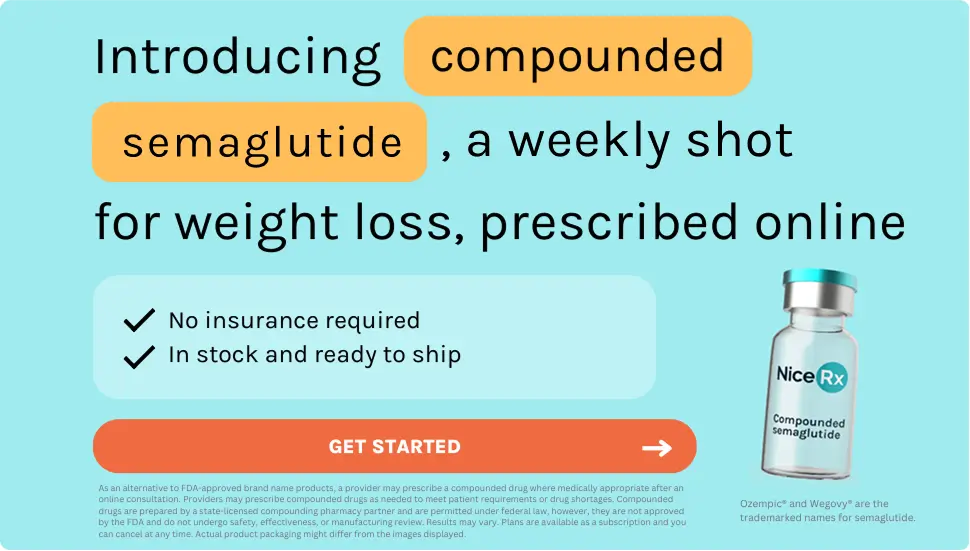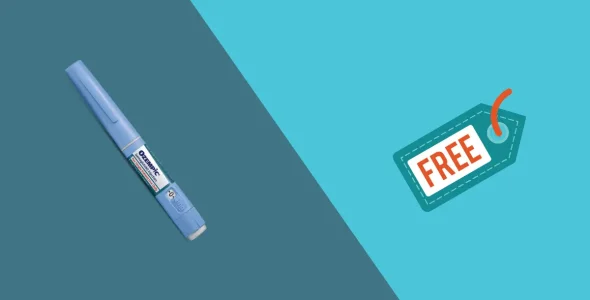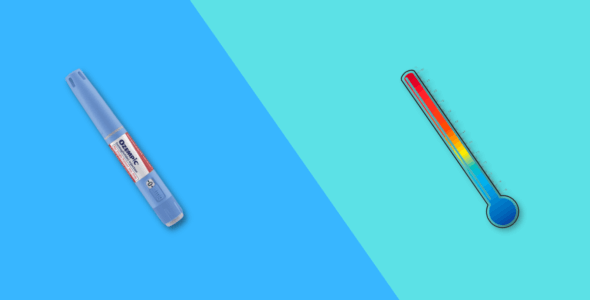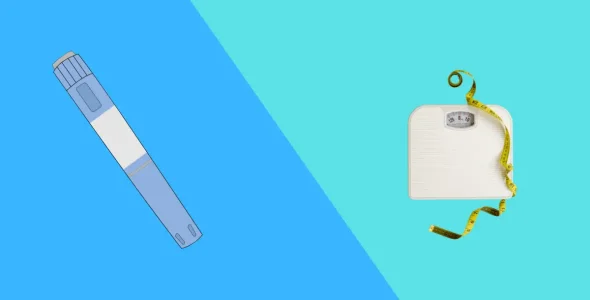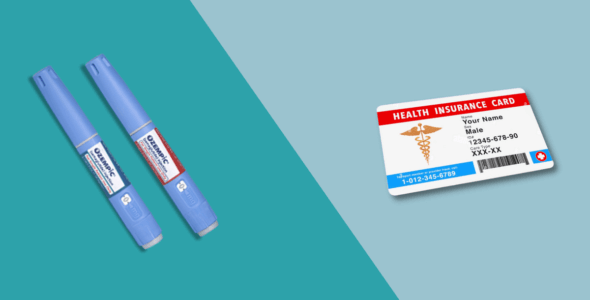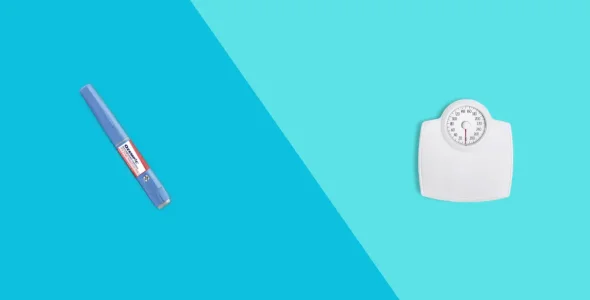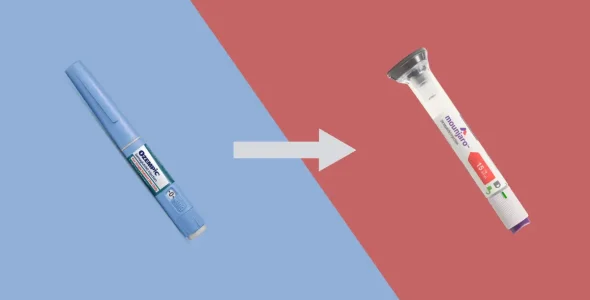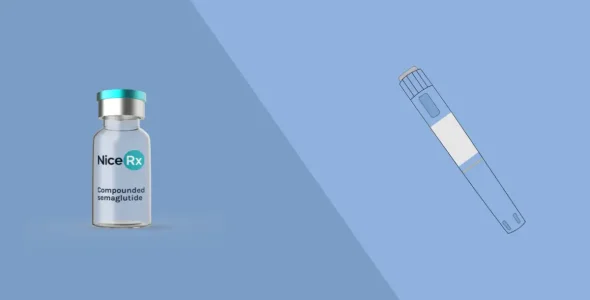Ozempic coupon: Comprehensive savings guide
Unlock potential savings on Ozempic: Your guide to finding coupons, discounts, and patient assistance programs.
Key highlights
- Without insurance, Ozempic can cost more than $1,000 each month but using Ozempic coupons can help you save hundreds or even thousands of dollars every year.
- The Ozempic Savings Card can reduce the cost to just $25 a month if you have private or commercial insurance that covers Ozempic.
- If you pay for your medicine without insurance, websites like SingleCare, GoodRx, and Optum Perks can help you save $100 to $300 each time you fill your prescription, depending on the pharmacy.
- The Novo Nordisk Patient Assistance Program (PAP) provides free Ozempic to low income individuals who meet certain income and insurance requirements.
Ozempic (semaglutide) injection is a glucagon-like peptide-1 (GLP-1) receptor agonist used to lower blood sugar levels in people with type 2 diabetes and off-label for chronic weight management in people with overweight or obesity. It is also used to reduce the risk of major adverse cardiovascular events in adults with cardiovascular disease.
A one-month supply of Ozempic (semaglutide) can cost over $1,000 without insurance. That adds up to around $12,000 a year. Whether you’re using Ozempic for type 2 diabetes or weight loss, you’re probably looking for ways to save money. Ozempic coupons can help lower the cost.
Ozempic coupons are available from the manufacturer, Novo Nordisk, and from prescription discount websites like SingleCare, GoodRx and Optum Perks. These coupons can help you save hundreds or even thousands of dollars in a year.
Looking for an Ozempic coupon? Find discounts and savings programs to help lower the cost of your Ozempic prescription. Learn how to access and use coupons to save money.
Understanding Ozempic costs
The list price of Ozempic is $997.58 for a 28-day supply without insurance, which is about $249.40 per week or $11,970.96 per year. The retail price you pay can vary depending on which pharmacy and location you purchase from. The average retail price can range from $800-$1,000 per month.
Check with your insurance to see if they cover Ozempic. If you have type 2 diabetes mellitus, insurance coverage is more likely, as most insurance plans, including Medicare and Medicaid (except in some states), do not currently cover weight loss medications.
The Ozempic Savings Card program can reduce the cost of Ozempic to as low as $25 per month. You must have private or commercial insurance to qualify for the program.
Eligible patients can receive free Ozempic through the Novo Nordisk Patient Assistance Program (PAP). This program helps uninsured or underinsured patients access medication for free if they meet certain criteria. Patients generally need to meet income and insurance criteria to qualify. However, the program is only for people with type 2 diabetes and not for weight loss. There’s currently no generic alternative available for Ozempic.
Where to find Ozempic coupons
The Ozempic Savings Card is the official coupon from Novo Nordisk, the company that makes Ozempic. It lets people with private or commercial insurance that covers Ozempic pay as little as $25 per refill for up to 24 months.
If you can’t use the Ozempic Savings Card, you might still save money with a coupon from websites like WellRx, GoodRx, Optum Perks, or SingleCare. Depending on the pharmacy, these coupons can save you up to 27% off the retail price of Ozempic.
Depending on your insurance, using an Ozempic coupon and paying cash might be cheaper. If you pay cash, it won’t count toward your deductible if your insurance plan has one.
Novo Nordisk Ozempic Savings Card Program
Novo Nordisk offers savings programs for U.S. citizens and residents with commercial or private insurance coverage. Those enrolled in government-sponsored insurance, such as Medicare or Medicaid, are not eligible.
If you have commercial insurance coverage that has coverage for Ozempic, you could pay as little as $25 for a 1-month, 2-month prescription, or 3-month supply with the Ozempic Savings Card, with the following maximum savings:
- $100 for a one-month supply
- $200 for a two-month supply
- $300 for a three-month supply
People with government insurance like Medicaid, Medicare, VA, TRICARE, or similar plans can’t use the Ozempic Savings Card. If you have employer insurance but it doesn’t cover Ozempic, you also can’t use the card. It’s only for people with private or commercial insurance that covers Ozempic.
To apply for the Ozempic Savings Card and check if you qualify, visit the Novo Nordisk website. If you already paid for your Ozempic before you found out about the coupon, you might be able to get some of your money back using Novo Nordisk’s Savings Offer reimbursement form, if you qualify.
NovoCare Pharmacy
If you have a prescription for Ozempic, you can pay $499 per month by purchasing your medication directly from NovoCare Pharmacy.
This option is ideal for those without insurance coverage for Ozempic who are paying out-of-pocket. The price includes free shipping and flexible ways to pay, including HSA and FSA so you can use before-tax dollars to pay for your medication.
Novo Nordisk Patient Assistance Program (PAP)
Drug manufacturers offer patient assistance programs to help low-income, uninsured, and underinsured individuals access their medication for free.
The NovoCare Patient Assistance Program (PAP) helps low-income individuals who are uninsured or underinsured and cannot afford their medications. If you qualify, the program will provide you with free Ozempic or Rybelsus. To apply, you need to meet certain income and eligibility requirements:
- You are a US citizen or resident
- Your total household income is at or below 400% of the federal poverty level (FPL)
- You have a prescription that meets the FDA-approved labeling
- You are uninsured or have Medicare with no other prescription drug coverage
- You do not have private or commercial insurance
- You are not enrolled or qualify for any federal, state, or government programs that provide prescription benefits, such as Medicaid, Low Income Subsidy (LIS), or Veterans Affairs (VA) benefits.
You can visit the NovoCare website to check if you qualify and start the application process, or call 1-866-310-7549.
If you’re eligible, there may be income limits, so having documents like recent pay stubs or tax returns ready can help speed up the process. Also, keep in mind that Patient Assistance Programs usually only cover the medication when it’s prescribed for its approved use, so using it for weight loss without type 2 diabetes may not qualify.
Prescription discount cards
Pharmacy discount programs like GoodRx and SingleCare can help lower the cost of medications, including Ozempic, if you’re paying out of pocket.
- GoodRx provides discount coupons that can be used at most major pharmacies, including Walgreens, CVS, and Walmart. For example, a 30-day supply of Ozempic might cost around $1,000 without insurance, but when using a GoodRx coupon, the price could drop to about $965 at participating pharmacies.
- SingleCare also offers discount cards that can be used at many pharmacies. You can get Ozempic for as low as $822 per month when using a SingleCare discount card.
- RxSaver offers prescription discount cards that can help you save up to 80% on medications, including Ozempic, at participating pharmacies like CVS, Walgreens, and Walmart. You can access these discounts instantly through their website or mobile app, with no membership or sign-up required.
Here’s a price comparison of Ozempic using coupons from different prescription discount card websites at the time of publishing this article:
| Pharmacy | Avg. Retail Price of Ozempic | Price with GoodRx coupon | Price with SingleCare coupon | Price with Optum Perks coupon | Price with BuzzRx coupon | Price with WellRx coupon |
|---|---|---|---|---|---|---|
| Walgreens | $1,154–1,162 | $1,002 (Savings of $152–160 or 13–14%) | $1,020 (Savings of $134–142 or 12%) | $1,050 (Savings of $104–112 or 9–10%) | $992(Savings of $162–170 or 14–15%) | $1,061 (Savings of $93–101 or 8–9%) |
| CVS | $1,135–1,143 | $1,003 (Savings of $132–140 or 12%) | $870 (Savings of $265–273 or 23–24%) | $955 (Savings of $180–188 or 16%) | $1,019 (Savings of $116–124 or 10–11%) | $1,004(Savings of $131–139 or 12%) |
| Walmart | $1,163–1,170 | $1,014 (Savings of $149–156 or 13%) | $851 (Savings of $312–319 or 27%) | $1,009 (Savings of $154–161 or 13–14%) | $1,023 (Savings of $140–147 or 12–13%) | $1,011 (Savings of $152–159 or 13–14%) |
| Rite Aid | $1,257–1,267 | $950 (Savings of $307–317 or 24–25%) | $951 (Savings of $306–316 or 24–25%) | $1,050 (Savings of $207–217 or 17%) | $1,009 (Savings of $248–258 or 20%) | $951 (Savings of $306–316 or 24–25%) |
Online pharmacies
Buying Ozempic online can be safe if you use trusted sources. The FDA strongly recommends purchasing prescription medications with a prescription from a licensed doctor and licensed pharmacies. Using the National Association of Boards of Pharmacy’s search tool, you can verify if an online pharmacy is legitimate.
Commercial and private insurance
To check if Ozempic is covered by your insurance, review your plan’s drug formulary (covered drug list), which includes a list of all of the drugs covered by your plan. Novo Nordisk also provides a free tool to help you check if Ozempic is covered by insurance.
The cost of Ozempic with insurance depends on your specific plan. If your plan covers Ozempic, you might pay as little as $25 a month with the Ozempic Savings Card. Some plans may even cover the full cost. To find out exactly how much you’ll pay, call your insurance company using the phone number on your insurance card.
If Ozempic isn’t covered by your insurance plan, you can submit a medical exception request with the help of your healthcare provider. In some cases, the insurance company will require prior authorization for approval. If the medical exception request or prior authorization is denied, you can appeal with the help of your healthcare provider.
Medicare
Medicare Part D drug plans and Medicare Advantage Prescription Drug Plans (MA-PD) do not cover weight loss drugs. If Ozempic was prescribed for type 2 diabetes or reducing certain risks in people with type 2 diabetes and heart disease, it would most likely be covered. If you have Medicare Part D or a Medicare Advantage plan, Ozempic or Rybelsus may be covered for treating type 2 diabetes, depending on your plan. You can check your plan’s formulary to see if it’s covered.
To see how much you’ll pay for Ozempic, check your plan’s drug list, called a drug formulary. It shows which medicines are covered and associated copays, based on the drug tier. Coverage varies by plan and medical necessity. The price will depend on your plan’s copay and whether you’ve met your deductible.
Currently, no Medicare plans, including original Medicare or Medicare Advantage, can cover medication prescribed for weight loss due to a legal prohibition. A bill in the U.S. Congress could change this in the future, and some organizations are working to get it passed.
Medicaid
Medicaid coverage can vary by state. Each state decides which drugs are covered by Medicaid. To see if Ozempic is covered in your area, check your health insurance plan’s list of covered drugs or contact your state Medicaid agency. You must also meet the income requirements set by your state to qualify for coverage.
Medicaid usually doesn’t cover Ozempic if it’s used for something it’s not officially FDA-approved for, like weight loss. To find out if your Medicaid plan covers Ozempic, contact your state Medicaid agency.
Flexible Spending Accounts (FSAs) and Health Savings Accounts (HSAs)
If you have a health savings account (HSA) or flexible savings account (FSA), you can use that money to pay for your Ozempic medication. It won’t lower the price at the pharmacy, but it can save you money over time because you’re using pre-tax dollars.
Alternative Ozempic cost-saving strategies
Here are some of the alternative cost-saving strategies you can use:
Mail-order pharmacies
Mail-order pharmacies can offer lower prices because they have lower overhead since they don’t need physical stores. They often offer 90-day supplies, which can be cheaper per dose. Additionally, mail-order pharmacies may have special pricing agreements with insurance plans or work directly with drug manufacturers, cutting out extra costs. If you’re considering using one, check with your insurance provider to see if it’s covered and compare prices with your local pharmacy.
Generic alternatives
Ozempic can be costly, but there are cheaper alternatives, including GLP-1 and non-GLP-1 medications. If your insurance doesn’t cover it or you’re paying out of pocket, talk to your doctor about alternatives to Ozempic. Continue reading to learn more.
Lifestyle changes
According to the American Diabetes Association, diet and exercise play a key role in managing type 2 diabetes. Eating a balanced diet with whole grains, lean proteins, and plenty of vegetables can help regulate blood sugar levels. Regular physical activity, like walking or cycling, improves insulin sensitivity and helps control weight.
90-day supply
Sometimes, getting a 90-day supply of Ozempic can be cheaper than getting three 30-day supplies. Ask your pharmacist to compare the prices. If the 90-day option saves you money and you can afford it, it might be a better choice.
Ozempic alternatives
GLP-1 alternatives
Mounjaro and Zepbound (tirzepatide)
Tirzepatide is the active ingredient in Mounjaro and Zepbound. Both are once-weekly injections with the same dosages, but they are approved for different indications.
Like Wegovy, Zepbound is FDA-approved for weight management in adults with obesity (BMI of 30 or higher) or overweight (BMI of 27 or higher) and related health issues like high blood pressure or diabetes. Mounjaro is FDA-approved for controlling blood sugar in adults with type 2 diabetes, like Ozempic and Rybelsus.
Mounjaro costs $1,069.08 for a 28-day supply, which is about $267.27 per week or $12,828.96 per year. Zepbound is slightly cheaper at about $1,059.87 for a 28-day supply, or $264.97 per week, and $12,718.44 per year.
Eli Lilly, the manufacturer of Mounjaro and Zepbound, offers Savings Cards for both drugs. If you have commercial drug insurance, you may be eligible for the savings card program, even if your insurance doesn’t cover the medication (other conditions may apply).
- Mounjaro Savings Card: If your commercial insurance covers Mounjaro, you can pay as little as $25 for a 1-month, 2-month, or 3-month prescription. If you have commercial insurance without coverage for Mounjaro, the card can save you up to $463 for a 1-month prescription.
- Zepbound Savings Card: If your commercial insurance covers Zepbound, you can pay as little as $25 for a 1-month, 2-month, or 3-month prescription. If you have commercial insurance without coverage for Zepbound, the card can save you up to $469 for a 1-month prescription.
You can also obtain single-dose Zepbound vials directly from LillyDirect, which costs $399/month for the 2.5 mg vial and $499/month for the 5 mg, 7.5 mg and 10 mg vials.
Mounjaro and Zepbound are not currently included in Eli Lilly’s patient assistance program.
Rybelsus
Rybelsus is an oral tablet that is FDA-approved for lowering blood sugar levels in adults with type 2 diabetes and may also help with weight loss. Although it’s not FDA-approved to reduce the risk of heart attack or stroke, studies suggest it’s safe for people with heart disease.
The common side effects of Rybelsus are nausea, vomiting, diarrhea, constipation, and abdominal pain. Although rare, some people taking Rybelsus may experience a severe allergic reaction, kidney or gall bladder problems, low blood sugar (hypoglycemia), pancreatitis (inflammation of the pancreas), and diabetic retinopathy.
Without insurance, a 30-day supply of Rybelsus costs about $997.58. If you’re eligible, you could pay $10 for Rybelsus (1-month supply) with a copay savings card from the manufacturer. The Rybelsus Savings Card program is limited to those with commercial insurance.
Trulicity
Trulicity (dulaglutide) is a once-weekly subcutaneous injectable GLP-1 agonist that helps control blood sugar levels and reduce cardiovascular risk in adults and children from 10 years of age with type 2 diabetes. Some people may also experience weight loss with it.
Without insurance, a month’s supply is around $800-$900, but with insurance, it can be much lower, depending on your plan.
The Trulicity Savings Card program can reduce the cost of Trulicity to as low as $25 per month if you have commercial insurance that covers Trulicity.
Insurance coverage for Trulicity may vary, and some plans may cover it for diabetes but not for weight loss. If you can’t afford it, the manufacturer has assistance programs that may help reduce the cost for eligible patients. Check with your insurance and your healthcare team for details.
Individuals who are uninsured or underinsured and meet the specified income and insurance eligibility requirements may be eligible to receive Trulicity at no cost through the LillyCares Patient Assistance Program.
Saxenda and Victoza (liraglutide)
Liraglutide, sold under the brand names Victoza and Saxenda, treats type 2 diabetes and obesity.
Approved in 2010, Saxenda (liraglutide) was the first GLP-1 medication approved for weight loss in adults with obesity or overweight with at least one weight-related health issue. It is also approved for children aged 12 and older with obesity. It’s made by the same company as Wegovy, Novo Nordisk.
Saxenda, being an older GLP-1 medication, has some downsides compared to newer GLP-1 medications. For example, it’s taken daily instead of weekly, and you might lose less weight with it than with other injectable GLP-1 medications. It also doesn’t have the same cardiovascular benefits as Wegovy.
Saxenda has the same list price as Wegovy, costing about $1,349.02 without insurance. However, the Saxenda Savings Card offered by Novo Nordisk can bring the cost down to as low as $25 for those with commercial insurance.
Like Wegovy, insurance plans usually won’t cover Saxenda without prior authorization. If you have type 2 diabetes, your insurance provider is more likely to cover Victoza, which contains the same active ingredient as Saxenda, liraglutide.
Victoza (liraglutide) is another injectable GLP-1 agonist that lowers blood sugar in adults with type 2 diabetes with known heart disease, but it needs to be injected once a day instead of once a week because it doesn’t stay in the body as long as Mounjaro and other alternatives. The FDA approved Liraglutide, the first generic of a once-daily GLP-1 injection, in December 2024.
Unlike Mounjaro, Victoza has proven heart protection benefits. It’s approved for people aged 10 and older. However, Victoza has fewer side effects compared to Mounjaro.
Saxenda contains 3 mg of liraglutide per dose, while Victoza has a maximum of 1.8 mg. Because Saxenda has more liraglutide, it may be more effective for weight loss. In the SCALE Diabetes trial, participants with type 2 diabetes were given either 1.8 mg of liraglutide, 3 mg of liraglutide, or a placebo. Those taking 3 mg of liraglutide lost 6% of their body weight, those taking 1.8 mg lost 4.7%, and those on the placebo lost 2%.
Novo Nordisk offers Savings Cards for Saxenda and Victoza. If you have commercial drug insurance or are uninsured, you may be eligible for the savings card program, even if your insurance doesn’t cover the medication.
- Saxenda Savings Card: If your commercial insurance covers Saxenda, you can pay as little as $25 for a 1-month supply of Saxenda with a maximum savings of $200 per month. If you have commercial insurance without coverage for Saxenda or are uninsured, you can save up to $200 per month.
- Victoza Savings Card: If your commercial insurance covers Victoza, you can pay as little as $25 for a 1-month supply of Victoza with a maximum savings of $100 per month. If you have commercial insurance without coverage for Victoza or are uninsured, you can save up to $200 per month.
If you don’t have insurance or have limited coverage and have type 2 diabetes, you might be able to get Victoza for free through the Novo Nordisk patient assistance program if you meet certain income and insurance criteria.
There is a generic liraglutide available which provides additional savings for those taking this medication.
Non-GLP-1 alternatives
- Metformin: Metformin (Glumetza and Fortamet) is a pill used to treat type 2 diabetes by helping control blood sugar levels. On average, metformin costs $35 per month without insurance.
- Phentermine/topiramate (Qsymia): Topiramate is a once-daily medication used to treat seizures and prevent migraines. Phentermine is an appetite suppressant that works by increasing levels of norepinephrine in the brain, which signals a decrease in hunger. It can also be used for weight loss in combination with other drugs. On average, Qsymia costs $149 per month without insurance.
- Naltrexone/bupropion (Contrave): It is taken twice daily and used to help with weight loss by reducing hunger and cravings. It combines two drugs, naltrexone and bupropion, to affect brain chemicals that control hunger. On average, Contrave costs $694–817 per month without insurance.
- Orlistat (Xenical or Alli): It is taken three times daily and helps with weight loss by blocking the absorption of some fat from the food you eat. It works in the stomach and intestines to reduce the number of calories your body absorbs. On average, Xenical costs $709 per month without insurance.
Watch out for scams and counterfeits
Counterfeit Ozempic may look similar to the real thing but could have differences in packaging, color, or texture. Always purchase from trusted pharmacies after verifying their safety information.
Be cautious of online pharmacies that don’t require a prescription, have no contact information, or offer prices that seem too good to be true. Look for verification logos like those from the National Association of Boards of Pharmacy (NABP).
Only use secure websites with “https” in the URL and avoid sharing personal or financial details with unverified sources. Always check if the pharmacy is licensed before making a purchase.
Frequently asked questions
Can I use multiple Ozempic coupons at once?
No, you cannot use multiple Ozempic coupons simultaneously for the same prescription. Most Ozempic coupons have terms that prohibit combining them with other discounts or insurance benefits, so it’s advisable to use the coupon that offers the highest savings.
Do Ozempic coupons expire?
Yes, Ozempic coupons expire. The Ozempic Savings Card is valid for up to 48 months from the date of activation.
Are there income restrictions for patient assistance programs?
Yes, patient assistance programs often have income and insurance restrictions to determine eligibility. These programs typically use the Federal Poverty Level (FPL) guidelines, with income limits ranging from 200% to 500% of the FPL, depending on the specific program and household size.
What if my pharmacy doesn’t accept the coupon?
If your pharmacy doesn’t accept the Ozempic coupon, you can try using it at a different pharmacy that honors the coupon. Alternatively, contact the coupon provider’s customer service for help or ask your doctor about patient assistance programs.
Bottom line
Without insurance, Ozempic can cost more than $1,000 a month. However, using Ozempic coupons can help you save hundreds or even thousands of dollars each year.
The Novo Nordisk savings programs, patient assistance programs, and pharmacy discount cards like GoodRx and SingleCare can help reduce costs significantly.
The Ozempic Savings Card from Novo Nordisk reduces the cost of Ozempic to $25 per month for up to 24 months. To qualify, you need to have commercial or private insurance that covers Ozempic.
The Novo Nordisk Patient Assistance Program (PAP) provides free Ozempic to eligible people. It’s for low-income U.S. residents with type 2 diabetes who are either uninsured or have Medicare.
Besides using coupons, you can compare prices at different pharmacies, order a 90-day supply, and use pre-tax money from an HSA or FSA to lower your costs.
Ozempic isn’t the only option for managing type 2 diabetes or weight loss. If you can’t get a coupon or the cost is too high, talk to your doctor about other medications like Wegovy or metformin.

